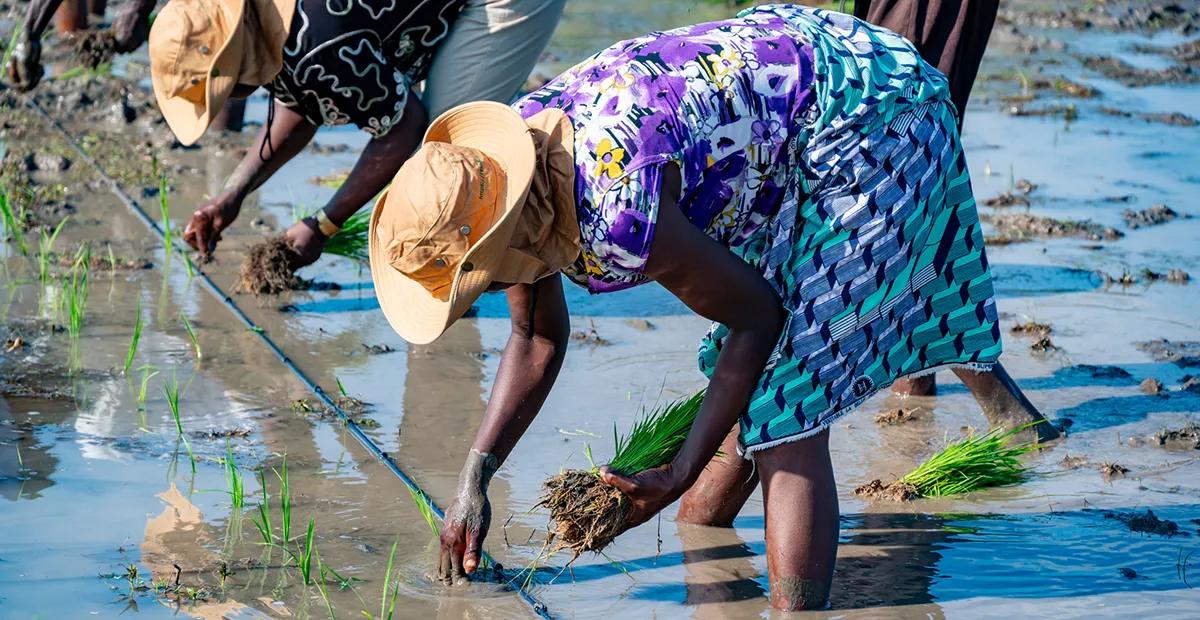Helping smallholders grow more and better rice in Sierra Leone
Most farmers in Sierra Leone plant their rice by broadcasting seed randomly into a paddy. They can plant a paddy quickly that way, but they aren’t rewarded with great yields.
Scientists at the Sierra Leone Agricultural Research Institute (SLARI) have been teaching members of cooperatives near Kambia a different planting method that’s showing promise to significantly increase yields.
“Traditionally, farmers sow their rice paddies by randomly broadcasting seed,” said Mr. Foday Sumah, a research officer with the Sierra Leone Agricultural Research Institute (SLARI). “That appeals to farmers because they can sow a hectare in a few hours, but in the long run it’s not effective as they won’t be maximizing their yields.”
In the random transplanting method, a high number of seedlings are required as there is no definite spacing. Most of the seedlings are often crowded thus posing high risks to competition for soil nutrients, water and light and often produce few and unproductive tillers resulting in much lower yields.
“In straight-row transplanting, each hill can effectively capture sunlight, water and nutrients within a given space to produce more and healthy tillers leading to higher crop production,” said Mr. Foday Sumah.
SLARI scientists have trained farmers how to plant their rice seedlings in straight rows. They first grow out the seeds in a nursery where they can monitor germination. Then they take the seedlings to the paddy.
Using a knotted rope to indicate distance they first mark out the sides. They then pull the rope lengthwise and plant at the knots. The result is rice in perfect rows.
Straight rows can help make practices such as hand or rotary weeding and application of fertilizers, herbicides or insecticides much more efficient. Most importantly, the method helps achieve optimal plant spacing.
“That makes a big difference in yield and minimizes seed loss due to germination failure,” said Mr. Foday Sumah. “Farmers can walk the rows to inspect the crop and easily weed between rows.”
Proper spacing can increase the yield by up to 40% over improper spacing. With proper spacing farmers can save money on inputs, labor and materials.
The cooperative members learned about the straight row method in a series of train-the-trainer workshops, which are part of a project called RESADE. In 2019, the International Center for Biosaline Agriculture (ICBA) launched RESADE in seven countries of sub-Saharan Africa. The project aims to improve food security and reduce the poverty of poor rural smallholder farmers, particularly women, in salinity-affected areas.
The project is implemented in partnership with the International Fund for Agricultural Development (IFAD) and the Arab Bank for Economic Development in Africa (BADEA).
“The RESADE project works to mitigate the effects of salinity on arable land by introducing salt-tolerant crops and best agronomic management practices to farmers in the project areas,” said Dr. R.K. Singh, Head of Crop Diversification and Genetics Section at ICBA and lead of the RESADE project. “We are working to establish and strengthen the capacity of farmers’ cooperatives, which is what we are doing with this project in Sierra Leone.”
Some farmers are already using line planting in their paddies. “When we were in the field during the training, we saw the performance of the crop based on its recommended spacing,” said Mr. Abu B.S. Dumbuya, a member of the TAMEMSU Farmers Association. “Line planting is very useful as a farmer may walk in between lines and inspect the crops planted without damaging tender plants. We now realize that this sowing method will help us achieve higher yields.”



